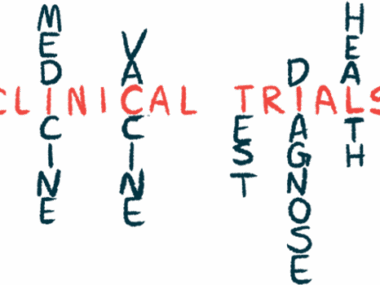New Guidelines Include Acthar Gel in Treating Pulmonary Sarcoidosis
Written by |

ESB Professional/Shutterstock
The use of Acthar Gel (repository corticotropin injection, or RCI) was among medications noted by both European and U.S. panels of experts, identified as a possible treatment of pulmonary sarcoidosis when other therapies fail or are not tolerated.
Notably, the therapy is currently approved to treat active sarcoidosis only in the U.S., being used off-label in Europe.
The latest guidelines, defined by a panel of experts from the European Respiratory Society (ERS), were outlined in a report “ERS clinical practice guidelines on treatment of sarcoidosis,” published in the European Respiratory Journal.
Included Acthar Gel-related recommendations supported those previously shared in a U.S. sarcoidosis expert panel consensus statement, published in the journal European Respiratory Review.
Glucocorticoids were the primary “initial therapy” recommended for these patients, followed by immunosuppressive treatments like Remicade (infliximab) or methotrexate for more severe cases, where people are at risk of death or permanent disability.
“Sarcoidosis is a multisystem disorder that almost always affects the lungs,” Robert Baughman, MD, the first author of the ERS guidelines, and contributing author of the U.S. consensus statement, said in a press release.
“The condition can be debilitating for many patients and in some cases become serious or life-threatening, which is why it is important to recognize those patients with progressive disease and manage them appropriately,” added Baughman, who is a pulmonologist at University of Cincinnati Health.
“The new ERS guidelines, along with the expert panel consensus statement, provide practical guidance to physicians of the role of Acthar Gel in the clinical management of sarcoidosis based on the combined clinical experience of experts in the field, creating consensus around the real-world use of Acthar Gel in treating patients with this disease,” Baughman said.
Marketed by Mallinckrodt Pharmaceuticals, Acthar Gel (80 units/mL) is a purified preparation of a natural form of adrenocorticotropic hormone (ACTH) collected from pigs and mixed with a gel. It is injected under-the-skin or directly into the muscle so that it is released slowly into the bloodstream.
While the exact mechanism of action of Acthar Gel is not fully understood, ACTH is thought to suppress inflammation and immune responses through several mechanisms.
Due to its anti-inflammatory and immunosuppressive activity, Acthar Gel is approved in the U.S. for the treatment of a number of inflammatory and autoimmune diseases besides sarcoidosis. In sarcoidosis, abnormal clumps of inflammatory cells can form in virtually any organ in the body, most commonly the lungs.
The newly published European guidelines were developed by an ERS task force committee comprised of clinicians, methodologists, and patient advocates with experience in sarcoidosis.
The committee listed Acthar Gel among the anti-inflammatory/immunosuppressive treatments for pulmonary sarcoidosis, and advised its use on a case-by-case basis when other therapies are ineffective or not tolerated.
It also recommended that Acthar Gel be used at a dose of 40–80 units twice a week, and noted that most of its toxic effects occur on the day of injection.
Given that its main side effect include diabetes, high blood pressure, swelling, and anxiety, the committee recommended that blood sugar and blood pressure be monitored in patients given Acthar Gel.
The guidelines also noted that recent studies have suggested that the therapy may allow for a reduction in the amount of corticosteroids, which are typically associated with several side effects in people with advanced sarcoidosis.
“However, the [therapy] is currently quite expensive and mechanism of action remains unclear,” the committee wrote, adding that “additional studies are needed to evaluate [its] efficacy, safety, and cost efficiency.”
Mallinckrodt said that it continues to invest in research to better understand Acthar Gel’s mechanisms of action, as well as its efficacy and safety profiles.
The U.S. expert panel consensus statement, developed by 12 independent physicians with expertise in treating patients with sarcoidosis, advised a starting dose of 40 units of Acthar Gel twice a week for most patients with less severe disease.
However, the panel did not achieve consensus on whether a higher initial dose should be considered for people with a more severe condition.
The panel also recommended that Acthar Gel be continued at an individualized maintenance dose for most patients who respond to the therapy, particularly those with advanced sarcoidosis or who fail to respond to most treatments.
If other interventions fail or if adverse events are severe and significant, physicians should consider reducing or stopping use of Acthar Gel. Therapy discontinuation could include a weaning to the lowest effective dose if the patient has stable, well-controlled disease after six to 12 months of treatment, the panel also suggested.
Regarding the use of other simultaneous medications, the panel agreed that the use of corticosteroids should be slowly reduced and potentially discontinued as quickly as possible in patients on Acthar Gel, but immunosuppressive medications should be maintained.
“There has been a need for quite some time for evidence-based consensus on the treatment of sarcoidosis, a rare disease that can significantly impact patients’ functioning and quality of life and can be difficult to diagnose and treat,” Steven Romano, MD, Mallinckrodt’s executive vice president and chief scientific officer, said in the company’s release.
“The ERS guidelines will help fill knowledge gaps in clinical care and enable more standardized treatment of symptomatic sarcoidosis to help improve clinical outcomes for patients,” he added.





